The Roebuck Bay mangrove areas of Broome / Rubibi are home to a permanent mixed colony of between 50,000 and 100,000 native Black flying foxes (Pteropus alecto) and Little Red (Pteropus scapulatus) flying foxes. They are mega-bats (i.e. big bats), and their local Yawuru name is Nimanburr.
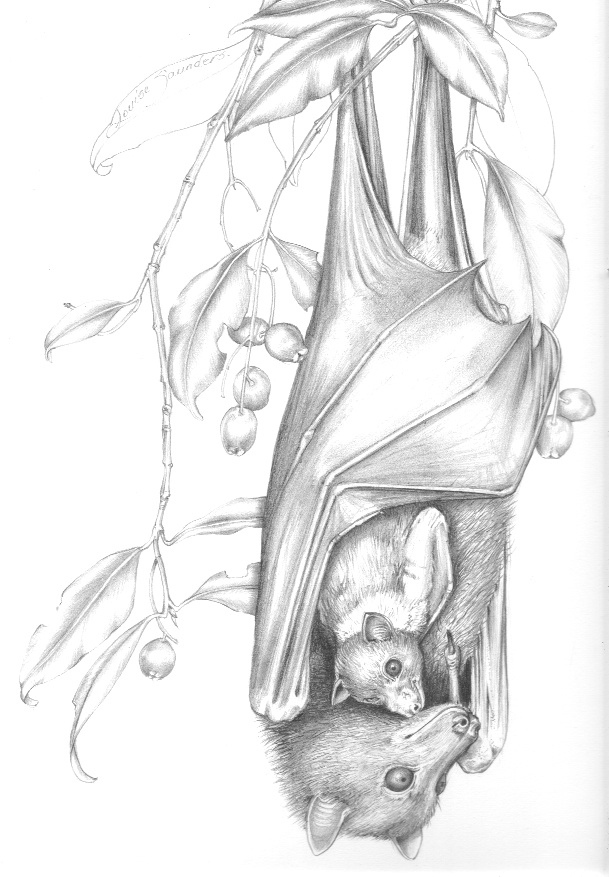
The flying foxes are vegetarians whose diet is nectar, pollen, and fruit. They are essential pollinators of more than 100 species of indigenous trees and plants. Flying foxes are referred to as an "umbrella" species because many other animals live under their landscape regeneration work of pollination and seed dispersal. In the words of Gardening Australia's Peter Cundall:
"Flying foxes are gardeners of the night performing a priceless environmental service" *
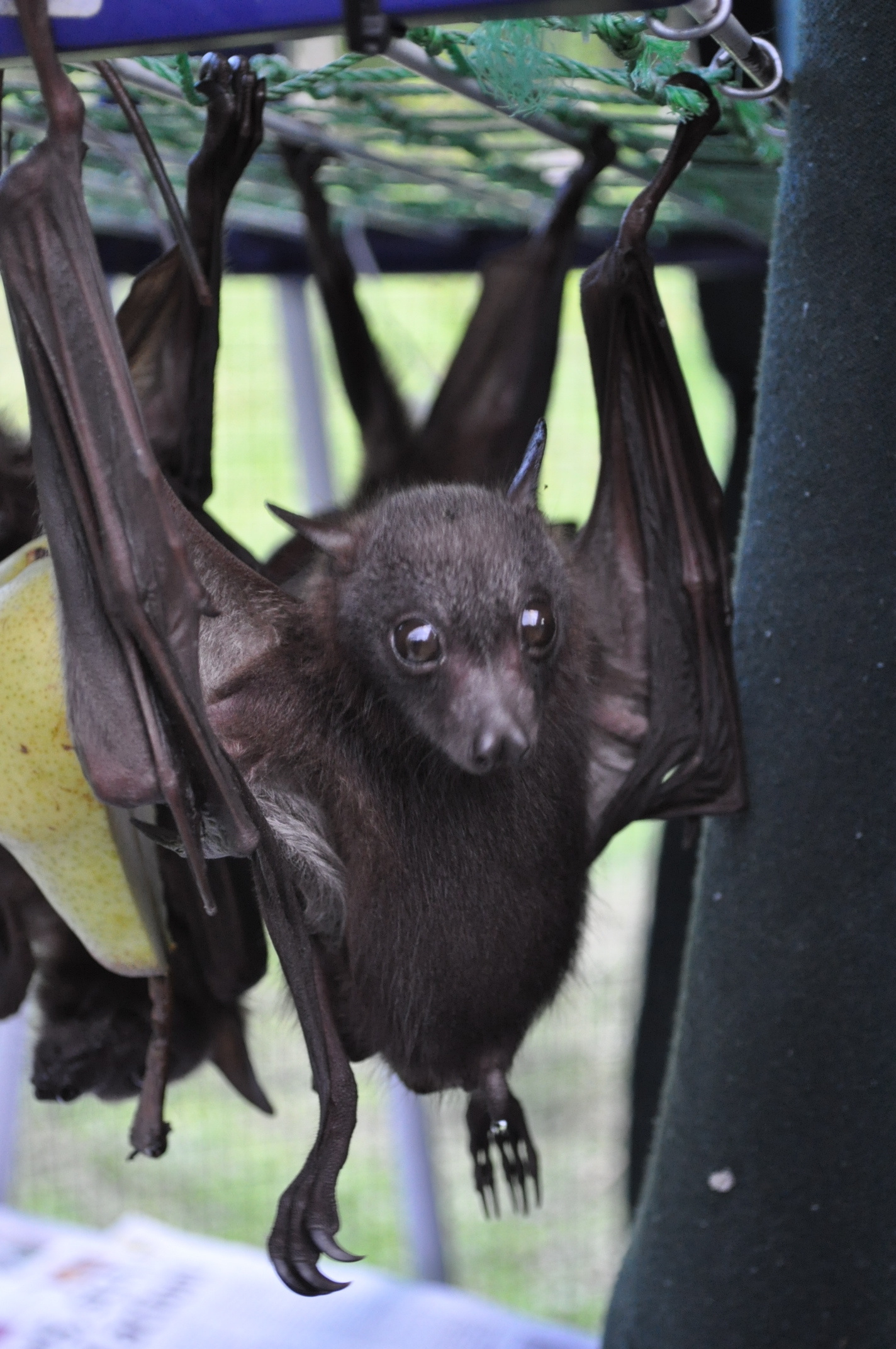
Australian flying foxes carry more viable pollen greater distances than any other vertebrate species ensuring that landscape vegetation avoids inbreeding and remains healthy and robust.
Flying foxes need a permanent undisturbed roost or camp like bees need a hive. They need to rest and raise their pups during the day, so it is important to avoid going into the actual mangrove colony site**.
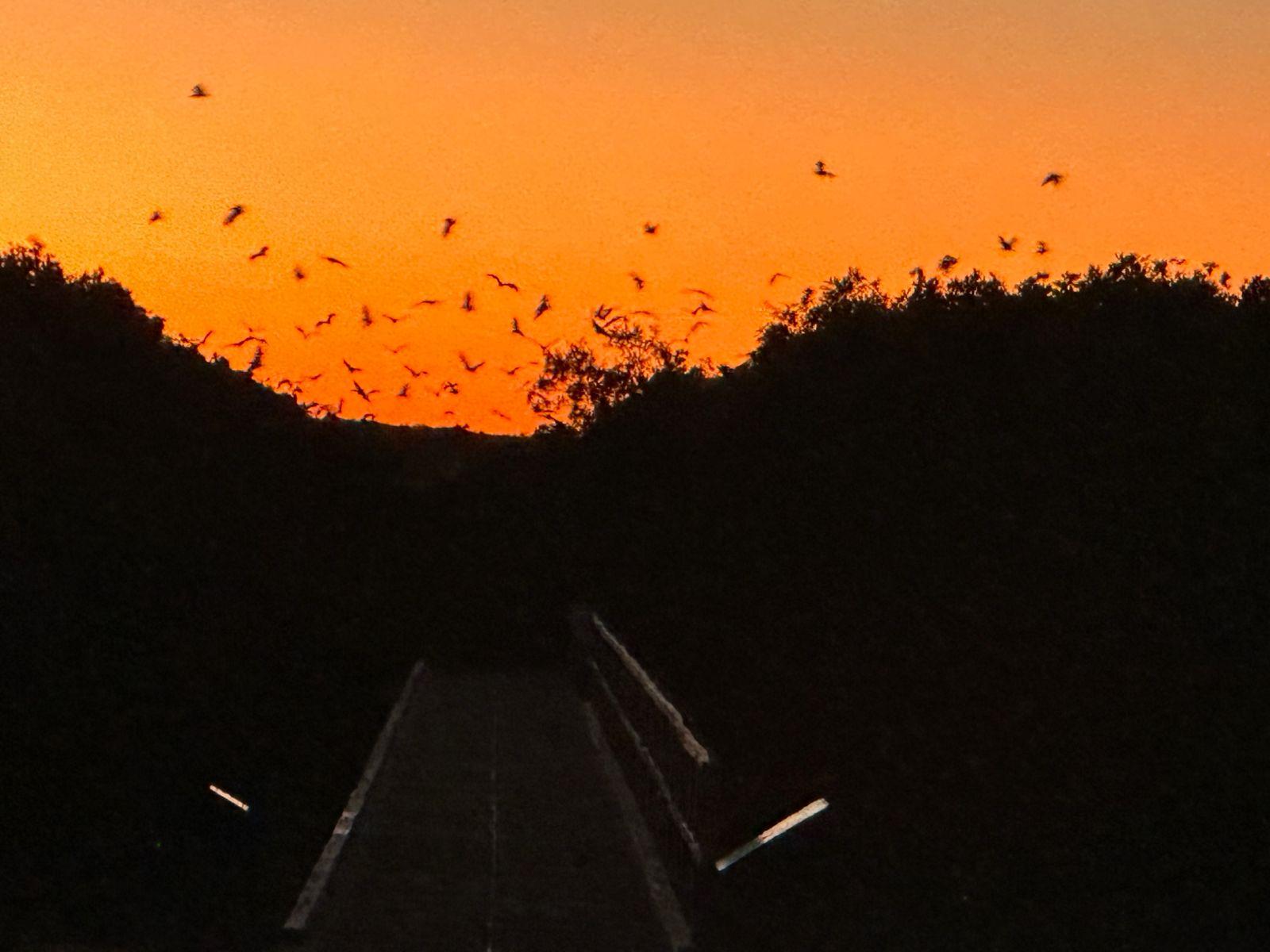
When is the best time to see them?
Although it happens every evening (late twilight), the best time to see the fly-out is on a full moon at either Streeters Jetty, Dampier Terrace Lookout or on the Jetty-to-Jetty pathway opposite Bedford Park (don`t forget mozzie repellent!).
The late twilight fly-out is a fantastic piece of "wildlife theatre", which has occurred here on the Broome peninsula every evening for at least the past 1 million years!
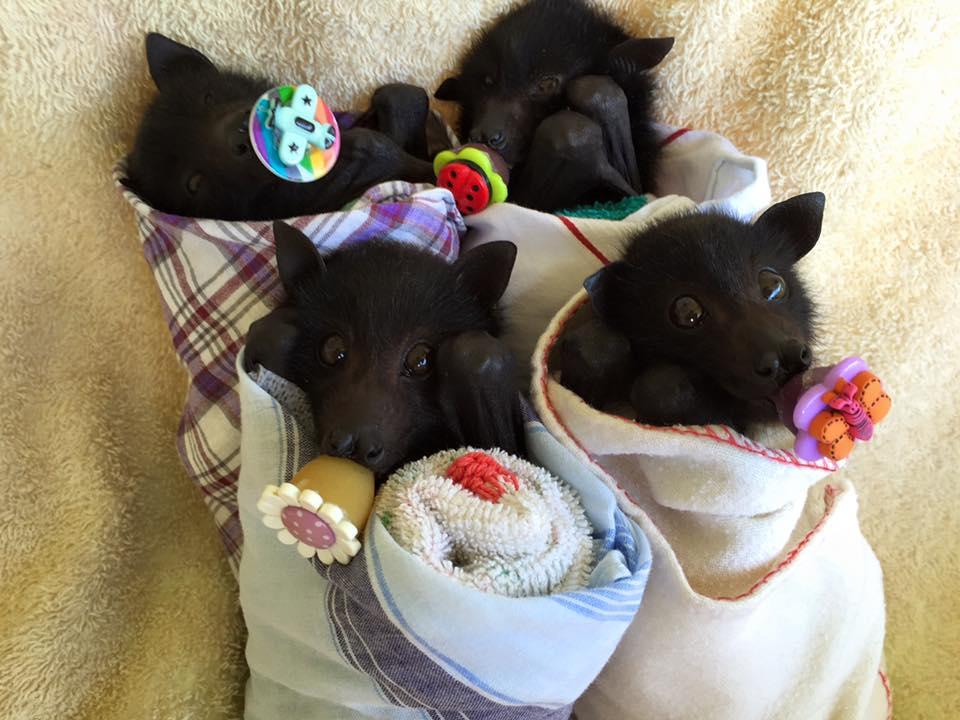
Some fun flying fox facts
Look up! Flying foxes have one baby (pup) per year, mainly from September to October. As mammals, they breastfeed their pup for up to five months. The baby is carried for a month and hangs on under mum (looks like a bomb in silhouette) when she flies out looking for food at twilight.
When the baby is too heavy to carry, it is left in a creche with other pups to play and sleep until mum returns in the pre-dawn hours – there is much mayhem as bubs are hungry and will try to attach to any mum within reach but mothers will only pick up and accept their own bub!
They learn to fly by about three-four months of age.
Flying fox pups engage in lots of fighting and biting play, just like kittens and puppies.
Flying fox pups' ears stop twitching and turning only when they are asleep.
They also dream and can quietly vocalise when having a vivid dream – maybe of predators?
Flying foxes are clean, healthy animals that constantly groom.
The odour associated with flying fox camps is mainly from the boys who have a scent gland on their shoulders. During mating season (March-April), they rub a branch with scent to attract females (with varying degrees of success) and shout a lot! Sometimes the lads` “approaches” are rebuffed with return shouting and a cuff over the ear – flying foxes have a sharp and useful thumb-claw.
The bats are the third most vocal of all mammal species after humans and whales and their day-time socialising is called the bat-parliament!
Flying fox camps can be hundreds or even thousands of years old
The bats represent "deep indigenous" pre-human Australia. To see the bats is to see what Australia’s mega-fauna would have witnessed each evening.
Their night vision is as good as cats’.
Unlike their small insect eating cousins, flying foxes don’t have sonar – just eyes and ears like us
The bats fly out up to 30 kilometres each night, searching for food, nectar, pollen and fruit.
Bats belong to the order Chiroptera, meaning "hand wing". Their hands evolved into wings over millions of years.
Bats make up about twenty percent of all mammal species in the world.

For Sick or Injured Bats:
Call Broome Wildlife Rescue
Phone 0428 860 014
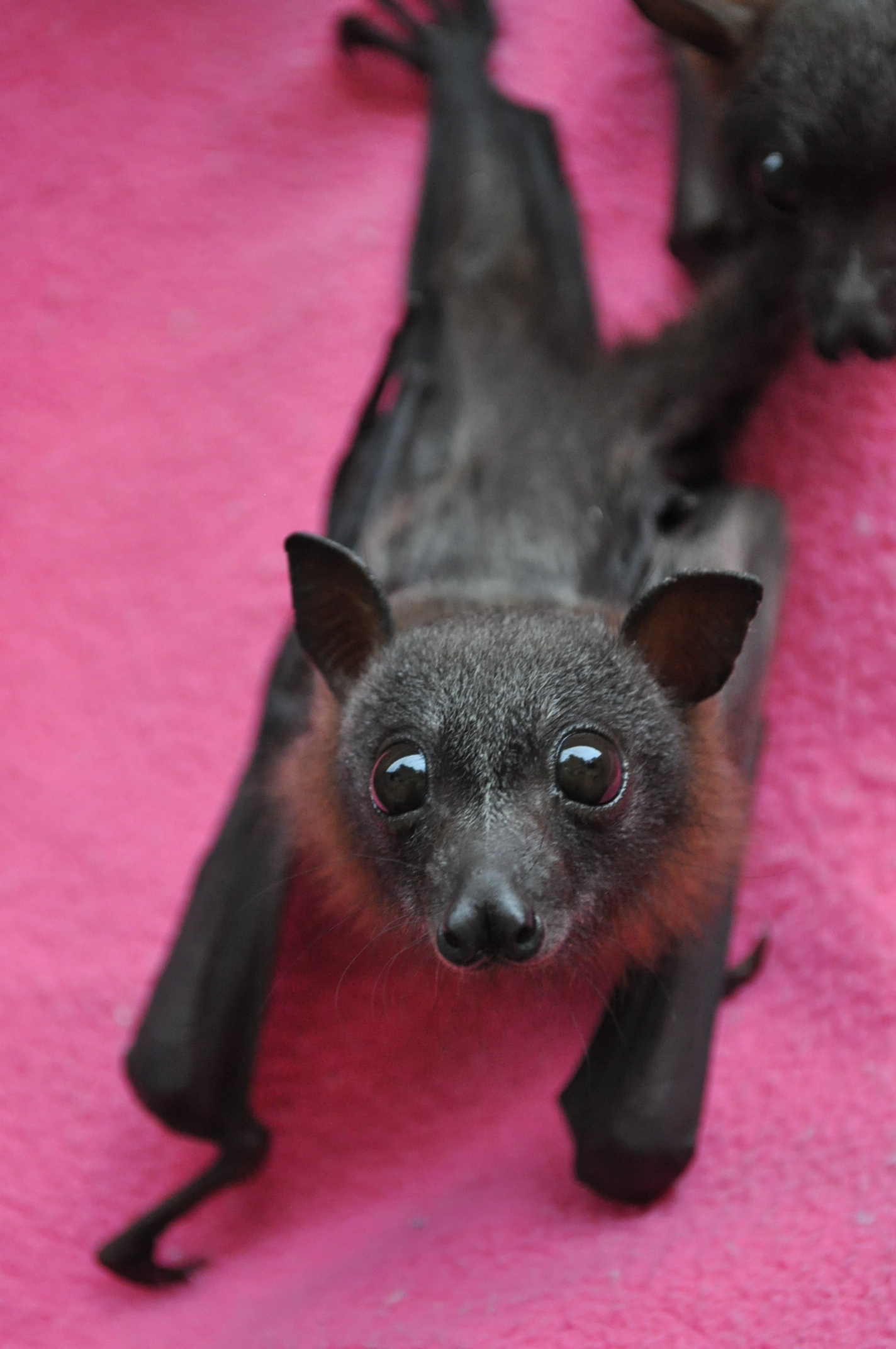
----
* Peter Cundall, ABC TV, Gardening Australia, 2007
** It can also be dangerous as disturbed bats can accidentally crash into intruders and cause injury or be injured.
References
Sue Churchill, Australian Bats, Allen & Unwin, 2008
Greg Richards and Les Hall, Flying Foxes and Fruit Blossom Bats of Australia, UNSW Press, 2000


